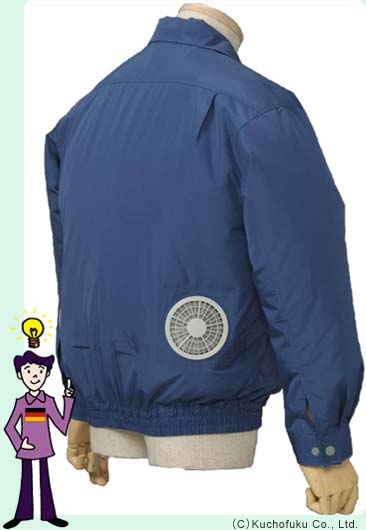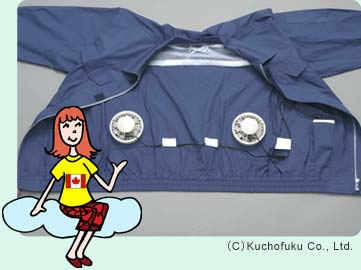
What kind of clothes cool you down when you wear them? The answer is "air-conditioned clothing." With long sleeves and a securely fastened front, they would seem to be the last choice for a hot summer day. But contrary to expectations, they are even cooler than wearing nothing at all.
Six Years in the Making
Air-conditioned clothing is the brainchild of Hiroshi Ichigaya. Ichigaya started out as an engineer at Sony Corporation and is now president of the firm that manufactures these clothes. Ten years ago, while traveling in Southeast Asia, it occurred to him that if everyone living in warmer climates began to use air conditioners, the impact on the global environment from increased emissions of greenhouse gases would be devastating. He subsequently became interested in finding a new way to let people stay cool without an air conditioner. Six years after his return to Japan and many unsuccessful attempts later, he succeeded in developing just such a product.
Ichigaya's creation was an outfit with two small fans embedded in the back. The fans, which run on four rechargeable AA batteries and have two power settings, draw in air and vaporize sweat by circulating the air inside. The effect is like a gentle breeze blowing over the skin.
Growing Line of Clothing
Many workers at precision instrument factories where air conditioners and fans cannot be used and outdoor sites where long sleeves must be worn for safety reasons choose air-conditioned clothing to prevent heat stroke and other problems. The clothes not only cool them down but vaporize perspiration immediately, preventing sweaty odors and heat rash. The design seems simple, but it actually involves about 20 patented technologies.

Ichigaya's company started out making long-sleeved work clothes out of synthetic materials but has since expanded the range of sizes, colors, designs, and materials. Each piece costs around ¥10,000 (about US$95 at ¥105 to the dollar). Air-conditioned clothing is so handy that many wearers can't believe they ever managed without it. In recent years the number of orders has been climbing steadily, and the company has had a hard time keeping up with demand.










